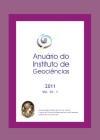Shale Microfacies Characterization in the Ponta Grossa Formation (Devonian) at the Eastern Border of the Paraná Basin (Brazil)
DOI:
https://doi.org/10.11137/2011_2_84-104Abstract
This study aims a microfacies characterization of outcropping shales in the Eastern border of Paraná Basin (34 samples) representing a transgressive system tract (lower Jaguariaíva Member, 20 samples) and a highstand system tract (upper São Domingos Member, 14 samples) of the Ponta Grossa Formation, inserted in a 3rd order depositional sequence cycle (megasequence), and their interpretation in terms of sedimentary processes and paleoenvironments. The study is based on petrographic microscopy, aided by XRD (clay mineralogy) and geochemical (TOC) data. The microfacies analysis took into consideration the mineralogy, microtexture, microfabric, microstructure (physical and biogenic), microfossils, particulate organic content, stratal variation, and colour in plugues and thin sections. Results point out 9 microfacies, 2 of them typical of the TST (M1 and M2) and 7 of the HST (M3 to M9). The microfacies from the TST show in general a chaotic microfabric (in part resulted from a higher bioturbation index), and a fine sand and silt rich composition (except one, associated to the 3rd order MFS); whereas the HST are silt and clay rich, and show a fairly oriented microfabric, and better preserved physical structures. Bottom wave reworking followed by biogenic activity (bioturbation) in proximal offshore paleoenvironmets are responsible for the best reservoir sedimentological characteristics of the microfacies M1 (associated to the TST) among all of them. Distal hyperpycnal flows, decantation from bottom wave resuspension plumes, microbial mats development, and low biogenic activity in prodelta/offshore paleoenvironments are responsible for best sedimentological sealing characteristics of the microfacies M3-M9 (associated to the HST).Downloads
Download data is not yet available.
Downloads
Published
2011-01-01
How to Cite
Carelli, T. G. and Borghi, L. (2011) “Shale Microfacies Characterization in the Ponta Grossa Formation (Devonian) at the Eastern Border of the Paraná Basin (Brazil)”, Anuário do Instituto de Geociências. Rio de Janeiro, BR, 34(2), pp. 84–104. doi: 10.11137/2011_2_84-104.
Issue
Section
não definida
License
This journal is licensed under a Creative Commons — Attribution 4.0 International — CC BY 4.0, which permits use, distribution and reproduction in any medium, provided the original work is properly cited.















